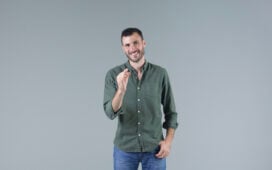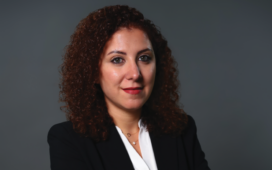Agencies need to redefine the way they look at media, specifically their reliance on paid media as an exposure drive, says Alejandro Fisher

We all know the world has changed. With 2.5 billion consumers interconnected across the same platforms, it makes no sense to still plan and execute media the same way we were doing so 10 years ago. Yet we still do.
The audience is now the media; this is the basis of what we at Havas call ‘Organic Marketing’, where consumers distribute our message without us (agency folk) getting involved. We understand that 82 per cent of internet users in Saudi Arabia and the United Arab Emirates are sharers. Behind this is a deeper understanding of the consumer journey, which unsurprisingly is digital at the core, with a plethora of new touchpoints that simply didn’t exist until now.
Even more importantly, these touchpoints no longer work in isolation. For example, experiences at the point of sale where mobile doesn’t play a role – whether it is price comparison or sharing a specific product with a friend for feedback – are few and far between.
Our current reality is that software has disrupted the world with entire industries disappearing as an outcome of this new reality. Remember the video store? If the world has adapted, why do we keep insisting on the same old principles such as print being a necessity to achieve affinity or television being the most effective way to achieve true mass reach? All channels play a role but these statements that ultimately affect planning decisions come from a place of comfort and familiarity. The world has changed but media hasn’t. That there are still ‘musts’ in media plans – these are the lies we tell ourselves.
Enough looking at the past, let’s talk about an approach for today’s world. We need to redefine the way we look at media, specifically our reliance on paid media as an exposure drive. Instead, we should take our clients’ owned assets as the starting point. The main change after all is not that we have new ways to reach our consumers but that consumers have new ways to engage and distribute our content. More than three million people in Saudi Arabia and the UAE have visited a company, brand or product’s Facebook page.
Some industries are naturally adept at this – movie or video campaigns start by releasing their early trailers online (most of the time while production is still in place). If it is exciting enough, it gets embraced by consumers, shared, commented on and beyond that gets analysed on YouTube. Screen grabs get turned into memes, soundbites into dub smashes and only at the final step of communication – when we have to convey a sense of urgency – does paid media kick in to fill in the gaps.
Great. For movies it’s easy. But what about other industries like automotive or fast-moving consumer goods? How do we get consumers to organically distribute our message if our owned assets are not necessarily designed with that function in mind? Here is where our new role comes in, as we shift towards consultancy and strategy versus buying and executing.
We live in a ‘brave new world’ where content is the starting point and of course not all brands have the resources nor need to become publishers. There are fantastic co-creation or syndication options, although when we look at what will be distributed as opposed to how we will distribute an immediate shift happens. All of a sudden we are more keen on driving engagement, ensuring visibility that can be measured and more importantly ensuring we speak to those who will embrace and distribute our message.
Recently, consumers have given permission to brands to enhance their lives with tailored content that is relevant and personal to them. We have seen some brands benefit from utilising partnerships as a way to distribute meaningful content across media channels. Some 43 per cent of all internet users in Saudi Arabia and the UAE look to find funny or entertaining content (i.e. articles, videos).
This is where data kicks in, with content at the core, and using data to distribute more efficiently only makes sense in our industry. If you are selling a car and you can identify tens of data points (from income to related searches) it goes beyond reducing wastage and delivering more efficient messages, it gets you a lot closer to the end of the funnel.
How this digital world has democratised planning and is not facing the limitations of before (auditing and measurement, relying on macro trends), data is readily available and content will also make us less reliant on international messaging, truly tailoring our communication and being able to gauge it’s reception in real time.
Content needs to be organic. People nowadays – especially the millennial generation – really understand the value of good content and recognise the benefits of it in their every-day lives.
Remember the old saying ‘sharing is caring’. This holds true because ‘content is everywhere’ and with more and more connected consumers we as marketers can leverage the audience as the key media distribution driver.
Exciting times lie ahead in this organic world. Consumers are ahead of us and it’s about time we catch up and face the reality of this ever-changing ecosystem.
(Alejandro Fisher is strategy director at Havas Media Middle East)









